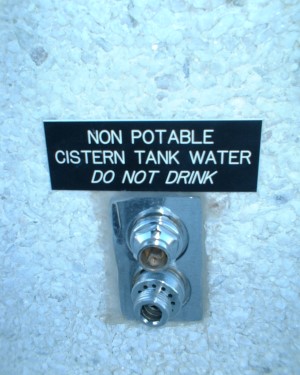Rainwater Harvesting
 The term ‘rainwater harvesting’ refers to the practice of collecting rainwater from a roof or other surface and using it to augment freshwater supplies. Water collected is typically used as a non-potable source for uses such as toilet flushing, urinals, and irrigation. If the water is treated it can also be used as potable water for drinking, dishwashing or bathing. Since treatment can be costly, most rainwater harvesting systems in urban settings are not set-up for drinking water.
The term ‘rainwater harvesting’ refers to the practice of collecting rainwater from a roof or other surface and using it to augment freshwater supplies. Water collected is typically used as a non-potable source for uses such as toilet flushing, urinals, and irrigation. If the water is treated it can also be used as potable water for drinking, dishwashing or bathing. Since treatment can be costly, most rainwater harvesting systems in urban settings are not set-up for drinking water.
A rainwater harvesting system typically consists of gutters or conduits that convey rainfall from a catchment area – such as a roof or paved area – to a cistern for storage and later use. Water exceeding the cistern capacity can be diverted to a soakaway or vegetated area for groundwater recharge, or to municipal sewers.
The advantages of using rainwater to meet water supply needs include:
- conservation of groundwater in areas where water supply is from groundwater sources;
- cost and energy savings associated with the reduced use of treated municipal water;
- reduced volume of stormwater runoff, which helps to prevent flooding and channel erosion, and
- cost savings associated with drainage infrastructure and downstream management of stormwater.
